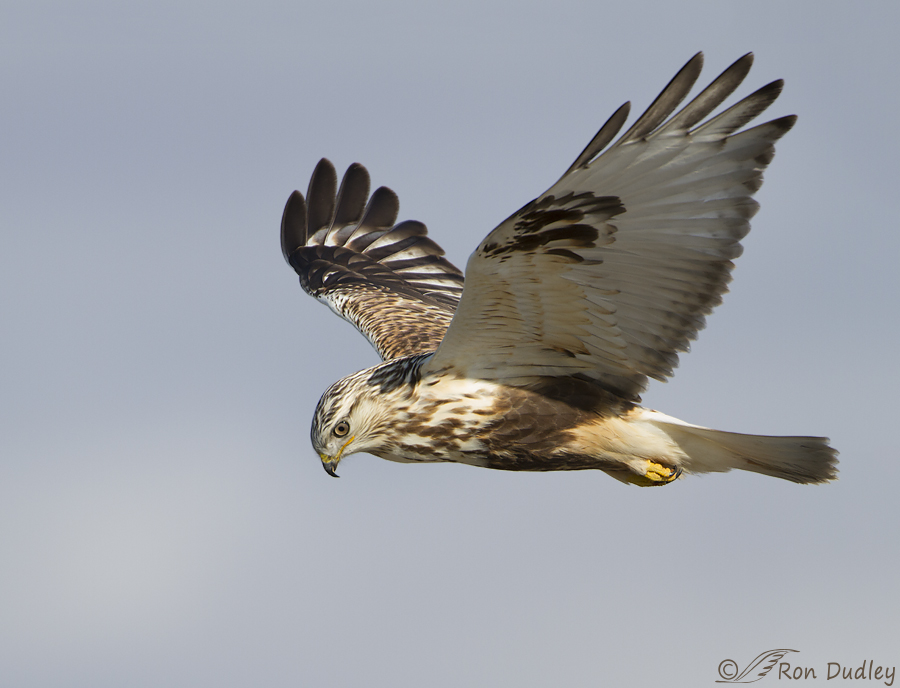Rough-legged Hawks are one of the salves that help me get through our cold, dreary winters. When they show up…

1/1600, f/6.3, ISO 500, Canon 7D, Canon EF500mm f/4L IS USM +1.4 tc, canvas added for composition, not baited, set up or called in
I photographed this juvenile (light eye instead of the dark brown of adults) in December of 2011 as it cruised the Antelope Island causeway. The bird was very tolerant of me and focused on its hunting so I was able to get many detailed flight shots as it kited in the wind and even captured a couple of voles.
That winter these hawks were common in my area, as they usually had been in the past, but since then I’ve noticed severely reduced numbers of them. I hope that’s been a localized phenomenon or just my individual, atypical experience with them and not a disturbing sign of yet another species in trouble.
Ron
I’m on the road again and likely will be for much of the week. As usual for these camping/photo trips I’ve prepared posts to be published in my absence but I’ll mostly be without internet access so I won’t be very active here while I’m gone. I do enjoy reading any comments you may make on my phone, though.


I like the tight tucked legs on this one.
Hi Ron, Yes, it’ll be nice to have these beauties around and all the opportunities they offer for great images like this. Our migration counts don’t indicate any kind of drop off in the general wintering population, but the numbers aren’t huge, so it’s hard to base an opinion on that. Our regular winter surveys in various parts of Utah from Snowville down through Fillmore indicate the same population stability over the past 4-5 years. What’s notable though is how fluid roughies are in moving around, probably in response to weather. For instance, Snowville might have huge numbers in early Dec, while a more southerly area like Fillmore might have very few. Two weeks later after a cold snap or heavy snow it might be completely reversed. And vice versa. Local densities seem to constantly change though the overall number doesn’t. You’d think they had wings or something. Lol. Last year they seemed hard to come by in traditional spots like Farmington Bay while the relatively nearby duck clubs west of the airport were SRO. I hope they pick a spot close to all our lenses this winter!
Thanks, Mike – that’s very reassuring to know. I was concerned because last winter roughies were virtually nonexistent on Antelope Island where in previous years they’d been common. I appreciate you taking the time to make this detailed and knowledgeable comment (and I suspect some of my readers do too).
Beautiful shot. I love the eyes on a juvenile Hawk. To bad they don’t stay that color. We haven’t seen as many Red Shoulder Hawks the last two years. I also hope that is of the past, and we will see more in the future.
Ooooh. Britches!!!! And you knew I would say that.
Nicely shows the feathered legs from which they get both their common and Latin name … Buteo lagopus means rabbit-footed. Beautiful shot.
Sensational flight shot Ron! Thanks for the info on the eye, I never knew how to tell.
Charlotte
A gorgeous bird, and one I’m not certain I’ll see in the wild. The eyes were the feature that really jumped out at me.